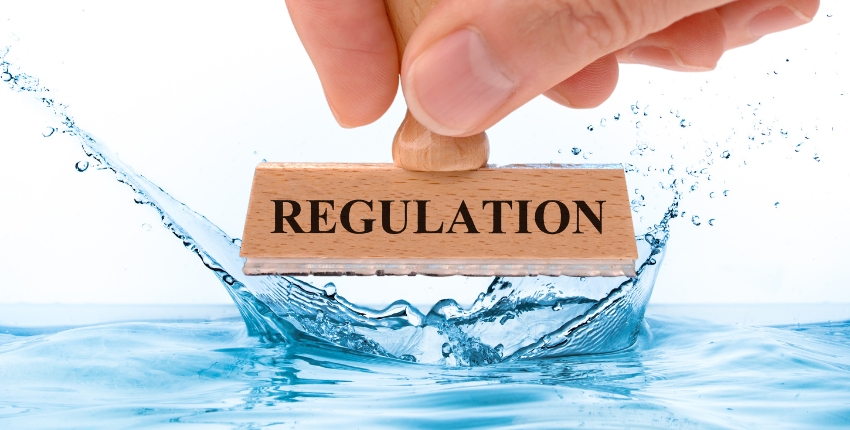Five cities promoting a circular economy through water reuse policies and regulations


As populations continue to grow, climate change intensifies, and infrastructure failures become more frequent, cities across the nation are facing increased pressure on their limited water resources. In response, many American cities are turning to water reuse regulations and implementing policies to promote a circular economy and ensure sustainable water management.
Buildings in particular can play a vital role in helping conserve resources. On a global scale, buildings use 14% of available potable water yet almost none reuse it. By recycling and reusing water, they are conserving valuable resources and reducing their environmental impact. Let’s explore how some forward-thinking cities are leading the way in water recycling policy.
- San Francisco, California
San Francisco is renowned for its progressive environmental policies, and its approach to water reuse is no exception. Article 12C of the San Francisco Health Code requires all new development projects of 100,000 gross square feet or more to install and operate an onsite water reuse system. These systems capture and treat greywater, rainwater, and blackwater for reuse in toilet flushing, irrigation, and cooling. This initiative not only reduces the demand on the city’s potable water supply but also supports a circular economy by turning waste into a valuable resource. San Francisco is part of a national effort through the National Blue Ribbon Commission to help overcome barriers to onsite water reuse and make its implementation more accessible. - Los Angeles, California
Los Angeles has long been at the forefront of water reuse. The city’s extensive program includes the use of reclaimed water for various non-potable applications such as irrigation, industrial processes, and groundwater replenishment. The city’s Green Building Code mandates that new residential buildings over 25 stories have 100% of the cooling tower makeup water supply come from non-potable water sources. Non-residential buildings over 25 stories will need to have a minimum of 6 cycles of concentration (blowdown) or a minimum of 50% of the cooling tower makeup water supply come from non-potable water sources. By integrating water reuse into its urban infrastructure, Los Angeles is creating a more resilient and sustainable water supply system. - Phoenix, Arizona
In Phoenix, water reuse is a critical component of the city’s water management strategy in the arid region. The city has implemented regulations that encourage the use of reclaimed water for irrigation, cooling towers, and industrial processes. Water Smart incentive programs encourage businesses and residents alike to take part in water conservation efforts by offering free consultations on ways to reduce water usage, and rebates for grass removal and replacing appliances with WaterSense-labeled ones. By integrating water reuse into its infrastructure, Phoenix is reducing its dependence on dwindling groundwater supplies and promoting a more sustainable and resilient urban environment. - Austin, Texas
Austin’s commitment to sustainability is evident in its recent roll out of the comprehensive GoPurple water reuse program. This initiative requires all new commercial, multifamily, and mixed-use developments larger than 250,000 square feet to adhere to new water reuse regulations. The city encourages the use of reclaimed water for irrigation, cooling, and industrial processes, helping to reduce the demand on its potable water supply. Austin’s approach to water reuse supports the circular economy by transforming wastewater into a valuable resource, thereby promoting environmental stewardship and resilience. - Miami, Florida
Miami’s water reuse regulations encourage the use of reclaimed water for irrigation and other non-potable purposes. The greywater density bonus offers developers a 35% density bonus if 100% of units use treated greywater, and a 25% density bonus if 75% of units use greywater for multifamily developments that are at least 25 units and five stories or less. By promoting the installation of onsite water reuse systems, the city is reducing its reliance on freshwater sources and supporting a circular economy. Miami’s approach to water reuse helps to conserve valuable water resources and promote environmental sustainability.
Incentives and grant opportunities that support water reuse policy
Water reuse technology is a capital investment that often pays for itself in 3-10 years, depending on the system type. Luckily, there are incentive and grant programs that minimize the initial investment and support the implementation of innovative water reuse technologies, helping to address water scarcity and sustainability challenges.
- Clean Water State Revolving Fund (CWSRF)is a partnership between the U.S. Environmental Protection Agency (EPA) and states to provide low interest rate loans for water infrastructure projects. There are a variety of project types eligible, including decentralized wastewater treatment systems.
- Wastewater Capacity Charges are one-time fees for new developments to connect to a municipal water or sewer system. Some cities will agree to reduce upfront water and wastewater capacity charges (or rate reductions) in proportion to the anticipated flow reductions. This can be up to $500,000 depending on the project.
- The Water Infrastructure Finance and Innovation Act (WIFIA)is a federal credit program administered by the EPA that provides long-term, low-cost supplemental loans for regionally and nationally significant water and wastewater infrastructure projects. Qualifying WIFIA applicants must provide matching funds from another source.
- Bureau of Reclamation’s WaterSMART Program offers grants for water reuse and recycling projects to support water management improvements. Small-scale projects, including high-efficiency indoor appliances/fixtures and commercial cooling systems, may request up to $100,000 in federal funding, with a non-federal cost-share of 50% or more of total project costs, for projects with total project costs no more than $225,000.
These are just a few of the opportunities available to help fund your water reuse project. There are a number of state and local grants and incentives available. If you’d like more information about the policies and regulations in your state or want to discuss incentive options for your project, contact Epic Cleantec. We’d be happy to review your project and inform you of any funding opportunities available.

